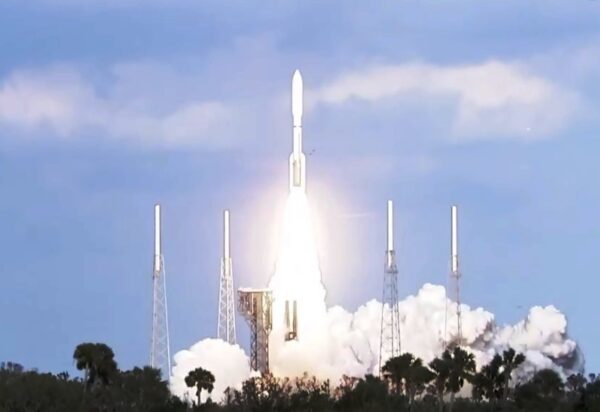A rocket atlas V exploded from Florida on Tuesday which was brought to the next large satellite orbit designed by the Administration of the Ocean and National Atmospheric (NOAA) to provide weather tracking, forest fires, and climate change in the western hemisphere of the earth The T-T spacecraft is the third in the latest series of Geostationary Advanced satellites, credited by revolutionizing real-time weather forecasting, environmental monitoring and danger detection from space.
The Going – Short program for the Geostationary operational environmental satellite – is collaboration between NOAA and NASA. @ Aircraft Space Weather-T Noaa Appointed at 4:38 ET (21:38 UTC), in the launch managed by @NASA_LSP: https://t.co/7LSRL5KTPO Watch the coastal phase coverage, with a comment directly back at 8pm ET (01:00 UTC Mar. 2) for spacecraft separation: https://t.co/z1rgzwqkwspic.twitter.com/zcvi6xPr8y
– NASA (@Nasa) March 1 2022 The latest satellite will change nama-18 after reaching an operational orbit of around 22,000 miles (35,000 km) above the equator, joining the predecessor-16 and go-17. They were launched each in 2016 and 2018.
Orbit Geosynchronous from the Going Satellite matches the speed of the rotation of the earth, keeping them in a constant position relative to the surface of the planet. Goes-18 will replace Goes-17 in the West position, to continue to oversee the United States adjacent to West, Alaska, Hawaii, Mexico, Central America and the Pacific Ocean, according to NASA.
The 17th operation is decorated by a damaged cooling system on its main imaging instruments, but still partially functional. Go-16 will remain placed in the eastern part of the hemisphere. Goes-T Lotenge to Orbit Introduction on Tuesday Above Atlas V 541 Rockets Flown by United Launch Alliance, a co and Lockheed Martin Corp. joint venture, from the Cape Canaveral space force base in Florida.
Once in the final position, Goes-18 will be used to track not only the weather but forest fires – one of the most important abilities for the Western United States – as well as flash floods, dust storms, fog and landslides Satellites are also equipped to monitor geomagnetic storms triggered by a burst of solar activity, as well as oceanography and climate change.

